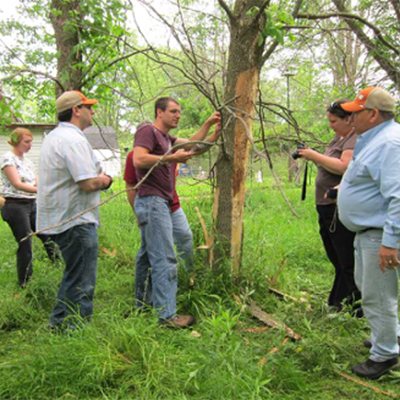Sustaining Wabanaki Traditions through Adaptation: Preparing for the Emerald Ash Borer in Maine

There is global evidence of rapid environmental change resulting from invasive species, such as the emerald ash borer (EAB). These environmental changes are often particularly severe to socially and economically disadvantaged human populations with strong connections to natural resources for cultural, spiritual, economic, and health reasons. For the Wabanaki nations of Maine (the Penobscot Indian Nation, Passamaquoddy Tribe-Pleasant Point, Passamaquoddy Tribe-Indian Township, Aroostook Band of Micmacs, and the Houlton Band of Maliseet Indians), black ash serves critical roles in the social, cultural, and economic spheres of contemporary life.
In this project, NSRC researchers used a multi-method Community Based Participatory Research process to engage stakeholders in all aspects of the research including inception, approach, analysis, dissemination of results, and community response related to socio-cultural assets and vulnerabilities. Early on, the researchers focused on understanding the different ways that stakeholders see themselves participating in the process for collective actions around planning and management for EAB. As the project progressed, the focus shifted to how different knowledges can be integrated and brought forward to design strategies to address collective actions in response to EAB infestations.
Research meetings provided an important platform to establish ideas around planning and management, and most attendees valued the chance for different entities to come together and to hear from scientists and resource managers about the emerging science around EAB. Project planning efforts led to a core group working at a regional perspective involving tribal, state, and federal entities helping with efforts to plan and manage for EAB.
